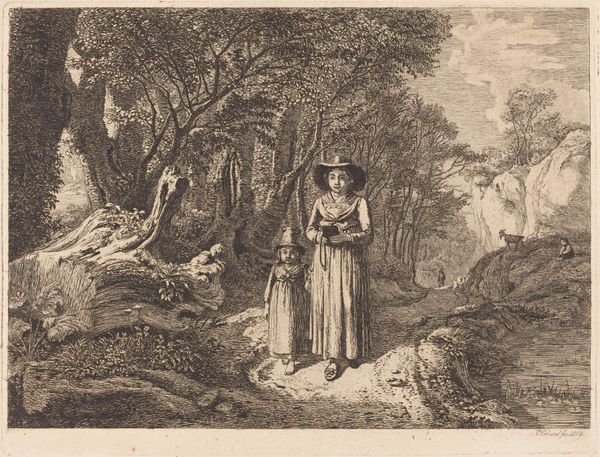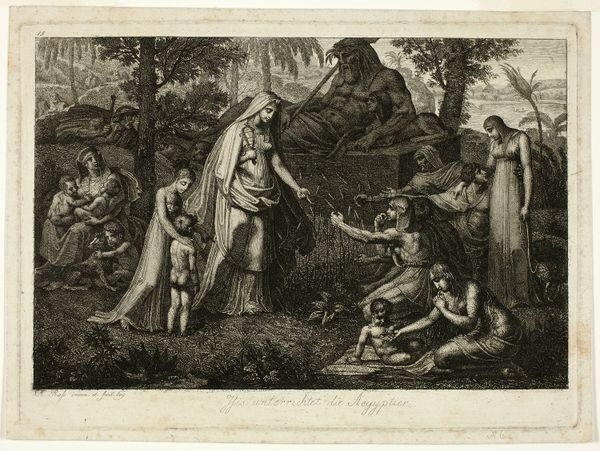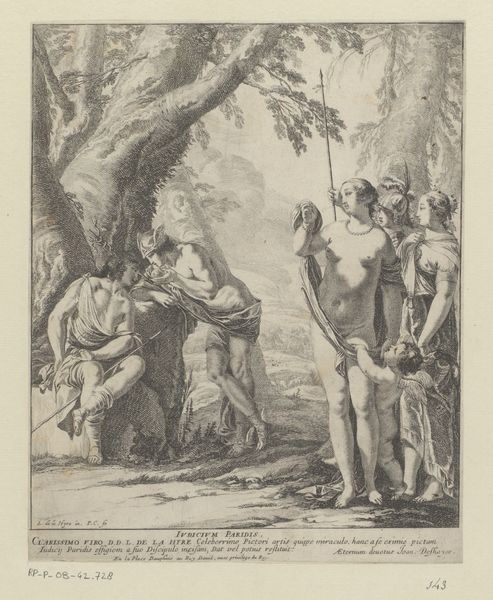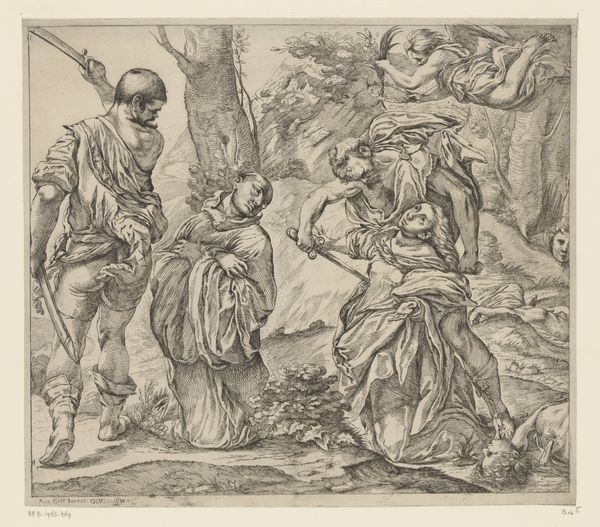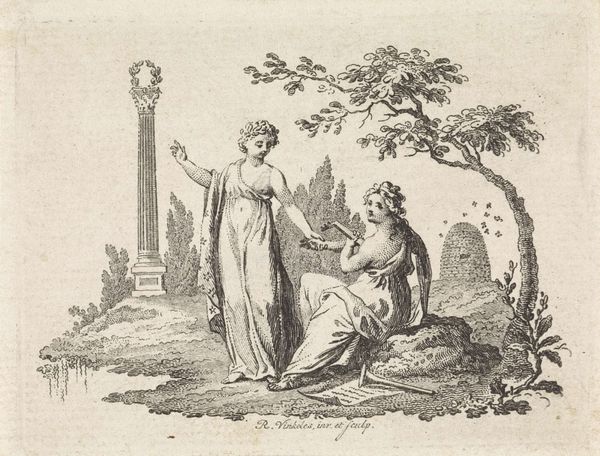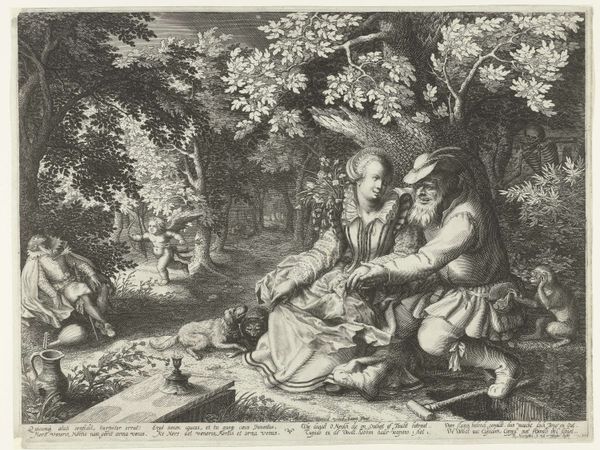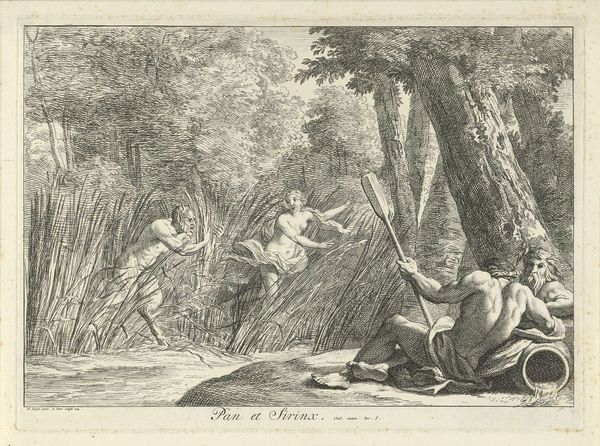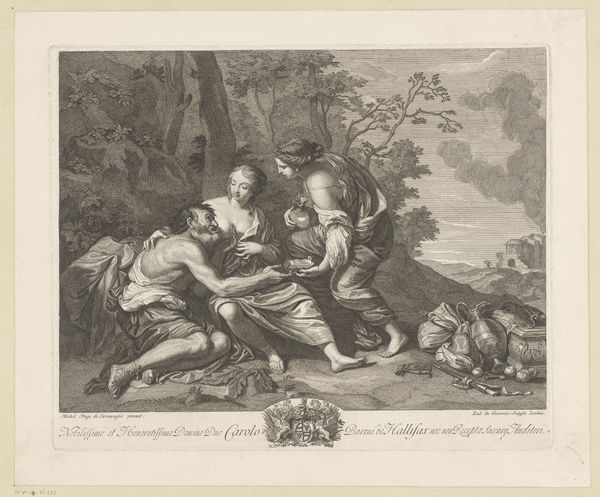
drawing, paper, engraving
#
drawing
#
baroque
#
landscape
#
figuration
#
paper
#
pencil drawing
#
ink drawing experimentation
#
history-painting
#
engraving
Dimensions: height 175 mm, width 242 mm
Copyright: Rijks Museum: Open Domain
Curator: This is "Egeria mourning the Death of Numa Pompilius", an engraving made by Crispijn van de Passe the Younger, dating roughly from 1636 to 1670. Editor: It has such a potent sense of grief, doesn’t it? The textures seem incredibly detailed, from the rough bark of the tree to the soft folds of their clothing. There’s something deeply moving about it, especially that woman reaching toward the sky. Curator: Absolutely. Crispijn was a master engraver; we can see in the intricate linework how he manipulated the tools, probably burins and etching needles, to create light and shadow on the copper plate. The material conditions dictated that level of precision. It's remarkable when you consider the economics of printmaking in 17th century Holland – prints like this circulated widely, shaping public perception. Editor: That outstretched hand speaks volumes, connecting to much older forms of art in posture but very current with post-reformation social and political power! Egeria’s despair encapsulates a profound sense of loss, yes, but the figures surrounding her provide vital context, don’t they? Curator: The print clearly engages with Classical narratives, tapping into existing systems of value in the process. You see the use of paper allows this kind of idea or belief exchange that would be different on another medium. This facilitated discussion and ultimately capitalistic gain during its production. Editor: How fascinating. The interplay between classical narratives, religious reformation, and emergent capital flows... it's all here, shaping gendered identities within these social currents. How powerful it can be, this image circulated at such a point, with the history it relays, affecting those to encounter. Curator: Definitely. Crispijn has essentially built layers that make that visible, but for a cost that could produce this across hundreds. It offers accessibility but also raises complex questions about the value of artistic labor, and who had access to disseminate messages. Editor: This piece leaves me reflecting on the role of visual culture in shaping our understandings of grief, power, and the legacies of classical narratives. Curator: For me, it is more a deep appreciation of the sheer material dexterity and production conditions embedded in such prints, understanding what materials were worth back then in comparison.
Comments
No comments
Be the first to comment and join the conversation on the ultimate creative platform.
